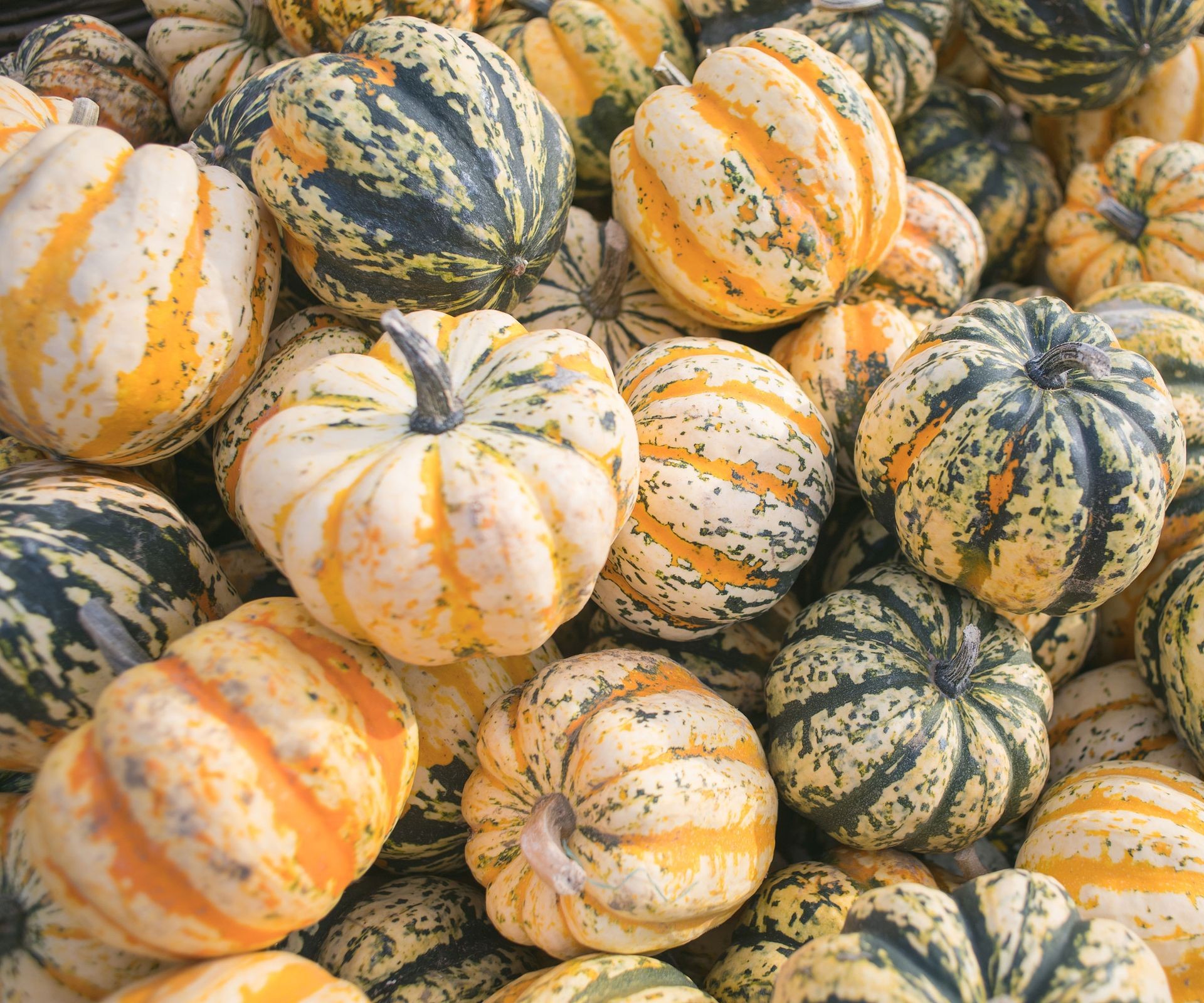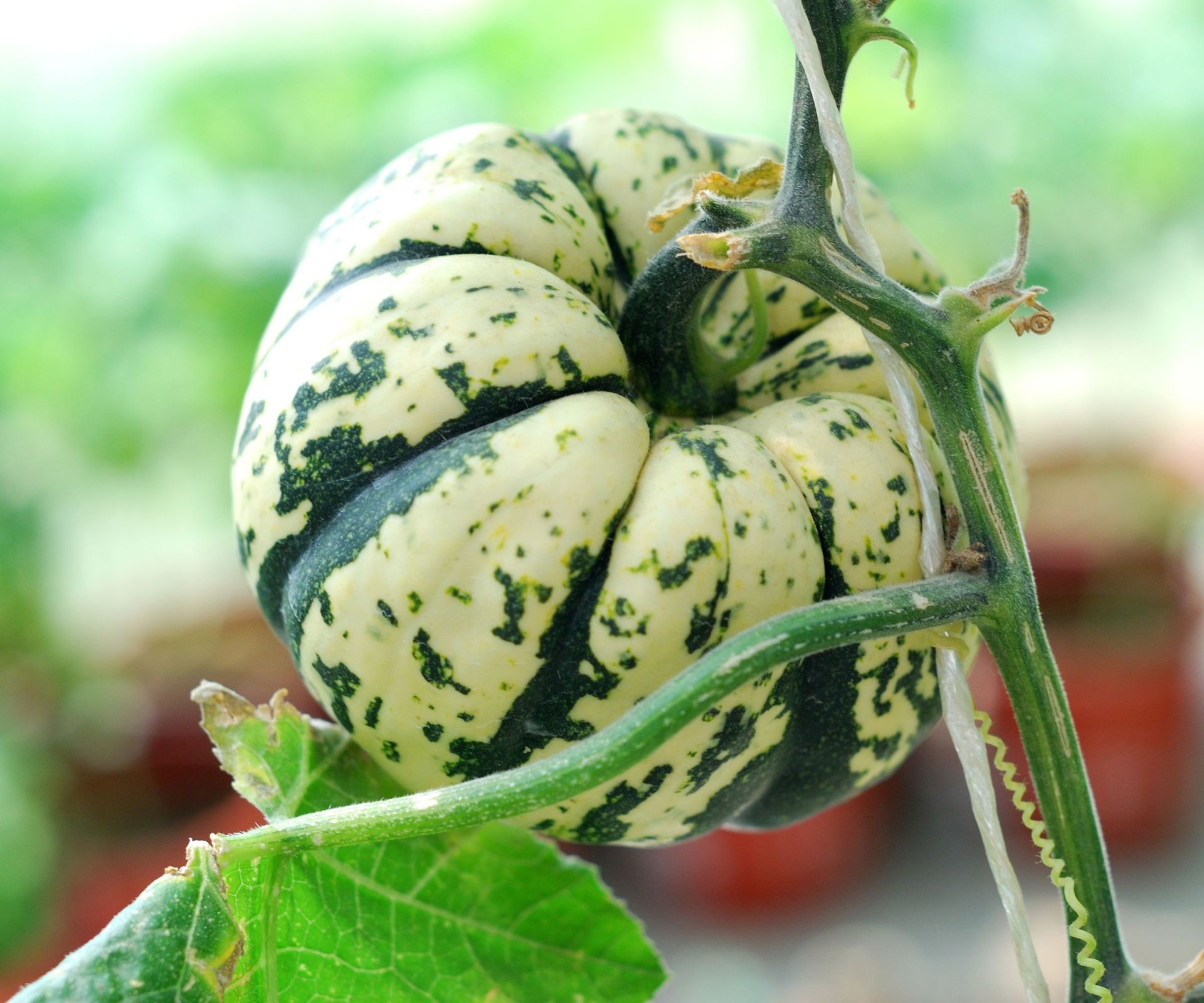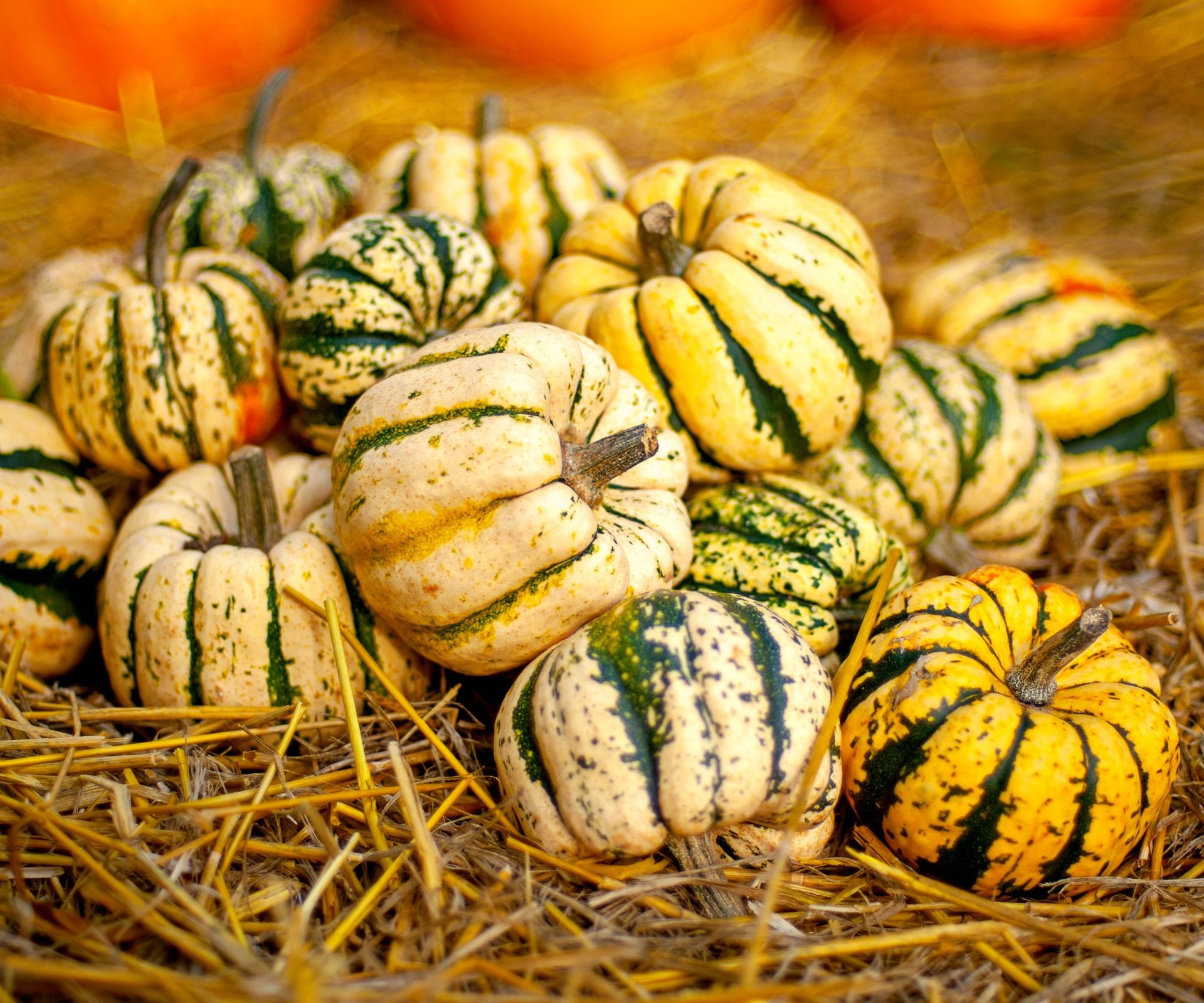No products in the cart.
NEWS
Growing Carnival Squash: Cultivating This Vibrant Winter Squash
Carnival squash is a true gem among the numerous varieties of Cucurbita pepo. Known for its stunning appearance, blending creamy white, yellow, orange, and green hues in striped and speckled patterns, it’s one of the most visually striking squash cultivars you can grow. A relative of the beloved field pumpkin and gourds, Carnival squash is classified as a winter squash, boasting a hard rind and delightfully tender flesh when cooked. If you’re wondering, “Can you eat Carnival squash?”, the answer is a resounding yes! These plump, decorative beauties are not only edible but are considered among the most delicious common types of squash available. Often enjoyed roasted, its naturally sweet, buttery flesh makes it a perfect side dish for a variety of meals or a star ingredient in soups, stews, and baked goods.
Cultivating Carnival squash in your home garden can be a rewarding experience, bringing both aesthetic appeal and culinary delight. Like many squash varieties, they require specific conditions to thrive, but with a little care and attention, you can enjoy a bountiful harvest of these festive fruits.
 Colorful harvested carnival squash arranged together
Colorful harvested carnival squash arranged together
Essential Care Requirements for Carnival Squash
Successfully growing Carnival squash, much like growing other winter squash types, hinges on providing adequate space, light, water, and nutrients. These are vigorous vining plants that need room to spread or support to climb.
Sunlight Needs
Carnival squash plants are sun-worshippers. They require a minimum of six hours of full sun exposure daily. For optimal growth and fruit production, aim for eight to ten hours of direct sunlight each day. Choose a sunny location in your garden bed when planting seeds or transplanting seedlings.
Watering Guidelines
Consistent moisture is important, especially during the early stages. Keep seeds and young seedlings moist, but avoid waterlogging the soil. As plants mature and develop a stronger root system, it’s best to water deeply but less frequently. This encourages roots to grow deeper, increasing drought tolerance. Check the soil moisture by feeling the top few inches (around 8 cm); water when it feels dry. A good rule of thumb is to provide about two inches (5 cm) of water per week, adjusting based on rainfall and temperature. Watering in the early morning is ideal as it reduces water loss through evaporation and allows the leaves to dry quickly, minimizing the risk of fungal diseases.
Temperature and Humidity
For germination, soil temperature should be at least 65°F (18°C), though 70°F (21°C) will speed up the process. The ideal temperature range for active growth is between 50-60°F (10-15.5°C), with around 50 percent humidity. While squash plants can handle a light frost for a few hours, temperatures dropping below freezing require protection, such as covering plants with a blanket or frost cloth.
Soil and Nutrient Requirements
Carnival squash performs best in fertile, loose, well-draining soil. Sand, loam, and light clay soil types are suitable, provided they drain well. A soil pH between 6.0 and 6.8 is considered perfect. Before planting, significantly enhance the soil’s structure and nutrient content by incorporating organic matter such as compost or well-rotted leaf litter. This helps improve drainage, retain moisture, and supply essential nutrients for robust plant development.
As heavy feeders, Carnival squash plants benefit greatly from additional nutrients throughout the growing season to produce healthy, sweet fruits. Beyond the initial incorporation of compost, consider using a balanced fertilizer. Side-dressing with well-rotted manure or applying compost tea every two to three weeks are excellent organic options. If using a synthetic fertilizer, choose a balanced ratio and always water it in thoroughly after application to help the nutrients reach the roots and prevent potential burning of the foliage. Providing ample nutrition is key to maximizing yield and flavor.
 Carnival squash fruit growing on a vine with large leaves
Carnival squash fruit growing on a vine with large leaves
Planting and Propagation
Carnival squash is most commonly grown from seed. You can start seeds indoors about three weeks before your last expected frost date, or sow them directly into warmed soil in the garden once the danger of frost has completely passed.
While less common, Carnival squash can also be propagated from stem cuttings. Select healthy stems with two or three growth nodes, make a clean cut, and place the cut end into loose, rich soil in a sunny spot.
Managing Common Pests and Diseases
Squash plants, including Carnival squash, can be susceptible to certain pests and diseases. Overwatering or watering overhead can contribute to fungal issues like downy mold. Common insect pests include squash vine borers, squash bugs, striped cucumber beetles, and aphids. Aphids are particularly problematic as they can transmit viruses that severely damage the plant. To help prevent some pest issues in the early growth stages, consider using row covers or hoop houses. Besides downy mold, other diseases like Fusarium and foot rot can sometimes affect plants. Monitoring your plants regularly and addressing problems early is the best approach.
Growing Carnival Squash in Containers
While winter squash varieties are traditionally grown in garden beds due to their vining nature, it is possible to grow Carnival squash in containers. Success requires a very large container and a strong support system. Young plants started in smaller pots should be repotted into progressively larger containers as they grow. By the time the first flowers appear, the plant needs to be in its final, large container capable of sustaining its growth for the rest of the season. Use stakes or a trellis to train the vines vertically, providing the necessary support for the developing fruits.
Harvesting and Storage
Carnival squash is typically ready for harvest about 55 days after the fruits begin to form. It is crucial to harvest all fruits before the first hard frost arrives in autumn, as frost can damage the squash and reduce its storage life. Use sharp pruners or a knife to cut the squash from the vine, leaving a small portion of the stem attached.
After harvesting, allow the squash to cure. Curing involves letting the squash sit in the sun for five to seven days, or indoors in a warm area (around 80°F or 27°C) with good ventilation. Curing hardens the rind, helping the squash store longer. Properly cured Carnival squash should then be stored in a cool, dry location with temperatures ranging from 50-60°F (10-15.5°C) and humidity around 50-70 percent. Under these conditions, with good air circulation, the fruits can often be stored for several months.
 Freshly harvested carnival squash with varying colors and patterns
Freshly harvested carnival squash with varying colors and patterns
Conclusion
Growing Carnival squash offers the gardener a delightful combination of ornamental beauty and exquisite flavor. By providing plenty of sunshine, consistent watering, fertile soil amended with organic matter, and appropriate support, you can cultivate these attractive and tasty winter squash successfully. Paying attention to common pests and diseases, and knowing when and how to harvest ensures a rewarding yield.
The sweet, buttery flavor of roasted Carnival squash is truly a treat, and knowing you grew it yourself makes it even more satisfying. Consider adding this vibrant variety to your garden plan this season. To ensure the best start and healthiest growth for your plants, explore the range of high-quality soil amendments and plant care products available from Biogarden.asia, designed to help your garden thrive. We invite you to try growing Carnival squash and share your experiences and successes with the Biogarden community!



